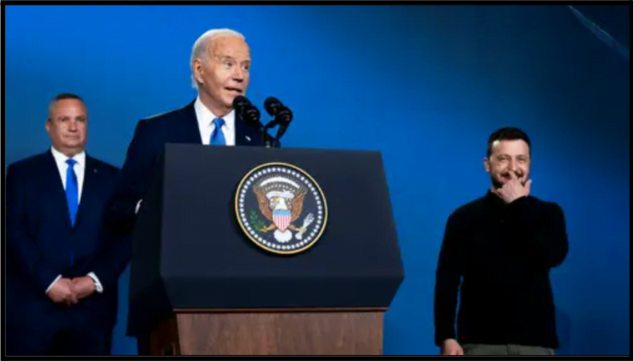Talking Next-Gen Energy.
A question at the dry cleaner’s
How do you respond when someone asks you what you do? Work is a central part of our lives and frequently an early topic of conversation when we meet someone new.
One day, I was driving home from giving a presentation in Durango and stopped off to grab my dry cleaning in preparation for a business trip I was going on.
I walk into the cleaners and tell the woman, “I’m here to pick up.” She eyes me a bit and then walks back to grab my clothes.
As she’s bringing them back, she asks with a slightly mocking tone, “What do you do that you wear such fancy clothes?”
I stutter at first. Who expects to get a question like that at the dry cleaners?? I end up saying, “I do training and workshops and have to travel, which is why I wear business clothes.”
I’m tripping over myself to justify my choice of outfit in a town known for being the “worst dressed” instead of confidently explaining the valuable work I do.
Fast forward to several weeks later. I gave an opening workshop for Startup Week in Durango (wearing jeans this time). The workshop was on how to talk to others about your business when networking.
Through the course of the 90-minute session, I used my own company as an example:
- You know how a lot of business leaders have excellent ideas and awesome solutions to solve big problems? But they struggle to talk about them in an authentic and compelling way?
- I coach leaders and executives to talk about their ideas. I help them be clear, connect to their key audiences, and build their confidence.
- For example, today, I’m leading a workshop with entrepreneurs all across the western slope of Colorado. I aim to help them talk about their businesses while at Startup Week.
A few weeks later, a local woman, Melissa, reached out because she was giving a keynote in a month. She hadn’t seen my talk, but a friend had attended and recommended me to her. Melissa became a client.
Consider the difference in outcomes between the dry cleaner and the workshop. In one, I don’t know how to respond and shrink back. In the other, I’m confident and clear, and it leads to a closed business deal.
In the success story, it’s not the person who heard my explanation who became a new client. One of my listeners passed my story along to someone else who was interested.
This is the goal. Empower other people to take what you say and share it. Enable them to “forward” your message to their friends and family. Like a chain email from the 1990s.
The better your response to explaining your organization, the better you’ll represent and build, your company’s and your own brand. And you never know what may come of it.
Know your audience
Before you start to craft your explainer, mentally put yourself in a context where you might use it.
As with any speaking, tailor your response to the person you’re talking to. What you tell your mom will be different from what you tell a new connection at a networking event.
Exercise: Write down 3-5 times you had to explain what you or your company does. Think back to conferences you’ve attended, family dinners, networking events, etc. Note the context, who you were talking to, and how you responded.
Once you have a couple of people in mind, consider these three questions:
- What do they do?
- What are they interested in?
- How can you frame your explanation to connect with them?
Jot down some brief notes to help shape your company explainer.
Templates for what you say
When you clarify what you want to say, it is much easier to share it when you’re not expecting the question. Like at the dry cleaners.
Below are several templates with examples you can use to develop your own explanation of what you do. All of these can be shared in as little as 30 seconds or turned into a full keynote speech.
At first, aim for a response that’s less than 60 seconds. It’s easier to expand than cut, so start with a tight version that you can build on when called to.
Template: Problem → Solution → Example (PSE)
This template is the simplest and a great starting point. Start by articulating the problem your company solves. Then share the solution: what your organization does to solve the problem. And close with a recent example.
- You know how… [problem]
- Well, what we do is… [solution]
- For example, just last week… [example]
Ewing School example:
- You know how… a lot of great ideas don’t seem to get traction because of how they’re communicated?
- Well… the Ewing School helps leaders talk about their ideas to get others as excited about them.
- In fact… just a couple of weeks ago, we helped a leader develop a conference keynote. For the next 3 days, people kept telling him how much they love the work he is doing.
Last week, I was at an intimate gathering of leaders in the energy space. At dinner, I sat next to Charles Oppenheimer and was inspired by his new initiative: The Oppenheimer Project.
I’ll use the Oppenheimer Project as an example. Here’s how Charles and his team might use this template to explain what they do:
- You know how… it’s tough for many places to get enough clean energy?
- Well… we’re all about promoting nuclear energy as a solution. It’s clean and there’s plenty of it. Our goal? To get policies in place that really highlight how nuclear can meet our global needs.
- Just the other day… Charles Oppenheimer went on the Titans of Nuclear podcast. He explained why this issue is so important. It’s not just about growing access to energy. We have to do it in a way that’s good for our planet.
If your organization is new or still just an idea, you might not have a use case yet to share as an example. In this case, try using the next template and create a hypothetical.
Template: PSE in a Story
This template comes from Paul Smith, a storytelling and leadership expert. It follows the same basic format as the Problem → Solution → Example template above, but frames it as a story:
- Pick a real or hypothetical character.
- Explain the series of events leading to this person needing your company’s services or product.
- Articulate how your company helped them.
- Highlight the benefits the character received.
Ewing School Example:
- Ben was a successful, well-respected leader who hated public speaking.
- He had to introduce a keynote at a conference he was leading. Hundreds of important leaders were going to be there. He was dreading it.
- He asked us for help. During his first run-through, he stared at his shoes and mumbled. We worked together for months leading up to the event, helping him tell his story.
- When he finally gave his remarks, he crushed it. People cried and even offered him jobs. Now, he regularly gives talks about the work he does.
Oppenheimer Project example:
- Imagine a young person who’s passionate about solving climate change.
- They learn about rising temperatures and carbon-free energy sources like solar and wind. But they sense a gap in the current solutions to climate change.
- Then, they attend an event where they hear Charles Oppenheimer speak on the opportunities in the nuclear sector.
- They get engaged in the nuclear energy debate. They push their representatives, not to roll back fossil fuels, but to open up nuclear. Now, they’re excited about the opportunities in energy. They feel like they’re really contributing.
Persuasive Narrative
This is a great template to use when you want to generate buy-in or move your listener to take action.
The key to this template is to start by putting your audience at center stage. Get your listener thinking about how the work you do affects them.
Then paint a picture of a vision you both believe in. Followed by articulating what threatens that vision. Enter the solution to resolve that threat. End by clarifying the next steps to get started on your solution.
- Audience-focused opening.
- A shared positive vision you both believe in.
- What threatens that vision?
- Your solution to resolve the threat.
- Call to action to implement the solution, vanquish the threat, and save our vision.
Ewing School example:
- Have you ever had an idea that you were really excited about? But when it came time to pitch someone on it, it didn’t go over well?
- Imagine a world where people with great ideas can get others just as excited about those ideas.
- The problem is that we don’t teach idea-makers to frame their ideas to connect with their audiences. And then deliver those ideas in a clear, confident way.
- At the Ewing School, we work with leaders who have Big Ideas to radically improve our world. We coach them to talk about their ideas with clarity and confidence.
- What is one thing you could do today that would improve how you talk about your Big Idea?
Oppenheimer Project example:
- Have you ever thought about how much you depend on energy? From cooking dinner to logging onto a Zoom call to getting Amazon packages to your house. Right now, the energy that runs your life mainly comes from carbon-based fossil fuels.
- Think about a future where our fuel is clean, abundant, and sustainable. A world where we’re not worried about running out of resources or harming our environment.
- But here’s the catch. Green energy sources like solar and wind can’t fully power our day-to-day lives. And fossil fuels produce carbon that is hurting the world around us. We’re at a crossroads, facing the threat of an unsustainable future.
- That’s where the Oppenheimer Project steps in. Inspired by J. Robert Oppenheimer’s vision, we’re driving a solution that’s been under our noses all along. Nuclear energy. It’s clean and efficient. It’s the key to unlocking our abundant future.
- So, what can you do? Get informed, get involved. Support policies that promote nuclear. We can turn this vision into reality. We can harness the power of nuclear energy for a bright future. Let’s not wait until it’s too late – the time to act is now.
*Dive Deeper: Our article on The Persuasive Narrative*
Practicing a conversational delivery
When we stand up and speak in front of a group, we want to be polished and commanding. But when we speak with someone one-on-one or in a group setting, we want to sound conversational.
When you get the opportunity to share one of your crafted responses in conversation, aim to maintain a tone and style that’s consistent with how you were talking before. Avoid going into “presentation mode.” It will be disconnective and feel inauthentic.
The challenge is to balance clarifying what you want to say, which we often write down, with a natural delivery.
To overcome this problem, first, write a draft without applying any filters. Then, instead of editing and polishing based on how you would typically write, do so based on how you would typically speak.
Use these rules:
- 15-18 words per sentence.
- <2 words per sentence with 3+ syllables.
- Active voice: front-load the subject and verb.
Go back to the template examples shared above. Do they follow these guidelines?
The goal of these tactics is to make your writing conversational. Not to adhere strictly to them. We’re not in grammar school here.
I don’t count hyphenated words or proper nouns (like Colorado and Oppenheimer) in the 3+ syllable rule. Unless they can be simplified. “Panthera leo” doesn’t make the cut here. Just say “lion.”
Do you have any other exemptions to these rules?
Test out your draft by speaking it to friends or colleagues. Anything that feels unnatural will also sound unnatural. Make a note of where you stumble or forget what you want to say. Get feedback from your listeners on what they remember.
Keep working until it feels totally conversational to slip in one of these templates. Go back and forth between writing and speaking to ensure it’s both clear and natural.
You can also use an app to draft or practice out loud. A tool like Otter.ai will capture what you say and transcribe it in real-time. You can then tweak and edit based on how you talk rather than translating from writing to speaking.
Conclusion
Your ability to talk about what you do and who you work for is essential to being a well-rounded communicator.
When you excel at explaining what you do, your message gets carried on the wind of other people’s voices. People “forward” your story to their friends and colleagues. And opportunities will come back to you.





